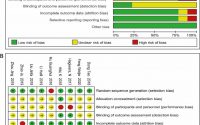Lupus and arthritis: What are the differences?
The causes and treatments for lupus and arthritis are different, so people should be aware of the differences between the two conditions.
There may be a genetic link between lupus and arthritis, though there are also significant genetic differences.
In this article, we look at the connection between lupus and arthritis. We also look at the symptoms, treatment, and outlook.
What is lupus?

Lupus is a chronic autoimmune condition characterized by an overactive immune system mistakenly attacking healthy parts of the body.
The areas lupus impacts include:
- skin and mucous membranes
- internal organs, such as the kidneys
- bones and joints
- blood
- brain
The effect lupus has on the body can be severe but varies between individuals.
Around 1.5 million Americans are believed to have lupus, and it is most common in women aged 15 to 44.
There are several different types of lupus. Systemic lupus erythematosus (SLE) accounts for around 70 percent of lupus cases.

Lupus causes widespread inflammation throughout the body, including in the joints. This means that it can trigger arthritis. Arthritis or joint pain that doctors refer to as arthralgia is among the most common symptoms of lupus.
People with lupus typically develop arthritis or arthralgia with several other symptoms, such as skin rashes and fatigue.
The form of arthritis triggered by lupus is different to that caused by RA. But, a small subset of people with lupus will have severe joint involvement, and an RA-like picture. This rare complication is referred to as rhupus.
Despite this one example of a crossover, there are major differences between RA and arthritis caused by lupus.
These differences include:
- lupus is not erosive while RA can be
- lupus arthritis is much less severe than RA
- the primary joints affected are different
Arthritis in people with lupus tends to affect:
- hands
- knees
- shoulders
- elbows
- feet
There may also be a genetic link between RA and lupus and other autoimmune conditions, such as inflammatory bowel disorder (IBD) and celiac disease.
While autoimmune diseases can share genetic risk factors, there are also significant differences between groups. More research is required to understand what triggers the genetic influences responsible for these conditions.

There are currently no absolute cures for lupus or arthritis. However, some treatments are effective for managing symptoms, reducing further damage to the joints and organs, and for improving someone’s quality of life.
Treatments usually involve medication and lifestyle changes. If the conditions have progressed, some people may need surgery to correct damage or prevent further changes.
People with lupus may require strong immunosuppression, which doctors would not recommend for arthritis.
Lupus primarily affects women of childbearing years, so it is vital that doctors also address and prevent problems during pregnancy.

Medication
Doctors use a range of different drugs to reduce inflammation in the body. Controlling inflammation is critical for controlling symptoms and reducing people’s discomfort.
Types of medications can include:
- nonsteroidal anti-inflammatory drugs (NSAIDs)
- disease-modifying anti-rheumatic drugs (DMARDs) to cut immune system activity, which may lower inflammation
- hydroxychloroquine, which is recommended extensively for lupus and may also prevent pregnancy-related complications
- biologics
DMARDs work well and can have additional benefits, such as reducing the risk of kidney problems and high blood pressure. However, because they suppress the immune system, they can also increase a person’s chances of contracting infections.
Also, doctors do not often recommend DMARDS during pregnancy, so a person should always ask for advice before taking medication while pregnant.
Researchers are also developing new approaches to reduce symptoms.
An example of this is a drug called rituximab that can reduce the activity of white blood cells that produce antibodies considered to be destructive.
These drugs may be effective in some situations as an off-label use, but research is ongoing to find out their long-term impact.
Benlysta is a drug approved by the U.S. Food and Drug Administration for lupus. It is a biologic that was previously only available as an intravenous or IV infusion but that recently became available as an injection.
Steroids
Doctors may also use steroids to control symptoms. Steroid creams can reduce skin rashes, and steroid injections are a fast-acting way to reduce inflammation in the joints.
A doctor may also recommend steroid tablets over longer periods of time to reduce kidney or blood inflammation.
Physical therapy
Being active is an important part of keeping the joints healthy and preventing further damage.
Doctors often recommend physical therapy alongside medication to reduce the joint problems caused by arthritis.
This kind of therapy usually involves a series of stretches and exercises designed by a physiotherapist to reduce pain, prevent further damage, and increase the mobility of the joints.

Outlook
Both lupus and arthritis are chronic health conditions that may become worse over time. Arthritis or arthralgia are common symptoms of lupus, causing mild to severe joint problems.
When a doctor can make an early diagnosis and manage the condition effectively, people with lupus and arthritis may experience mild or minimal symptoms for many years.
As it causes widespread inflammation, lupus is an unpredictable condition and varies considerably from person-to-person. It can often have a serious impact on well-being, particularly if it affects internal organs such as the kidneys.
Researchers are developing new medications that appear to be effective in relieving some symptoms, but more high-quality research is needed.
Source: Read Full Article


